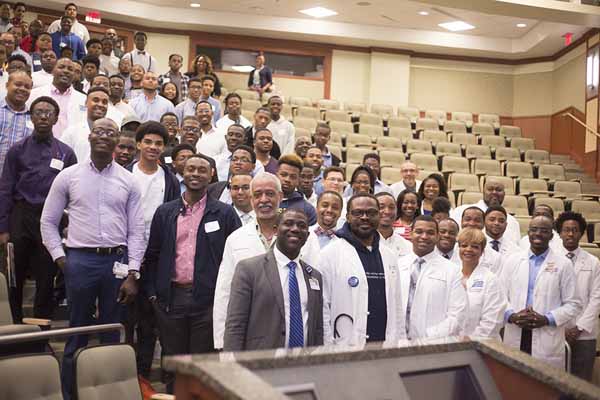
A pair of physicians well versed in racism and inequities in medicine called on Texas physicians to use their advocacy voice and their spheres of influence to help make needed changes for their patients.
“Addressing Racism in Health Care,” the opening keynote address of TexMed 2022 at the Hilton Americas-Houston on April 29, presented evidence that Black physicians and other people of color are underrepresented in medicine, and how that lack of representation is affecting both patients’ health choices and their health outcomes.
Both presenters – Kerry-Ann Mitchell, MD, and Arghavan Salles, MD – gave their presentations remotely. Dr. Mitchell reviewed pregnancy-related mortality data in the U.S. between 2014 and 2017, which showed 41.7 deaths per 100,000 live births for Black mothers. Black mothers were much more likely to die from pregnancy-related complications than white mothers (13.4 per 100,000) or Hispanic or Latino mothers (11.6 per 100,000).
And although infant mortality has been decreasing overall, Dr. Mitchell added as she dissected data between 1935 and 2007, the rate of mortality for white infants has decreased much faster than that of Black infants, who are more than twice as likely to die as white infants, according to 2007 data.
The presenters offered evidence that those outcomes tie into the relatively meager representation of Black doctors and other physicians of color. Dr. Salles reviewed demographic data that demonstrate the nation’s significant shortage of Black and Hispanic physicians. She noted the percentages of physicians representing minority demographics are significantly lower than those of the overall population: about 6% of physicians in the U.S. are Hispanic, 5% are Black, and 1.3% are Native American or Alaska Native.
“We really are nowhere near representing the population adequately,” Dr. Salles said.
When a minority patient does see representation up close, the patient’s willingness to listen to that doctor goes up dramatically, according to data the pair presented on “racial concordance” between patient and physician. For example, Black patients who saw a Black physician were more likely to say yes to getting their blood pressure taken post-consultation. The same effect existed with determining their body mass index, and with being willing to get their flu shot, Dr. Mitchell says.
“What that highlights, again, is that racial concordance does lead to a difference in patients feeling comfortable and actually moving forward to getting the screenings,” she added.
Racial concordance between Black patients and their physician even has shown evidence of dramatically improving newborn mortality figures, Dr. Mitchell said, showing data illustrating “that mortality penalty that they pay – twice as likely – is half if [a Black newborn is] cared for by a Black physician.”
Dr. Salles examined racialized barriers to career advancement and noted that time hasn’t taken care of racial disparities in medical school applicants or admissions. For example, data published in 2021 show the representation of Hispanic women in medical schools was the same in 2019 as it was in 1980. The medical school enrollment numbers for Black women have improved slightly over time, Dr. Salles said, but “Black men are less represented now than they have ever been before.”
Near the end of the presentation, Dr. Salles outlined steps that physicians can take to better support those who have been excluded from medicine. Those steps include:
- Amplifying the voices of those who aren’t being heard, and giving them credit for their ideas.
- Not making assumptions, such as assuming that a woman who has just given birth won’t want or be able to take on big responsibilities because she’s focused on being a new mother.
- Donating to an organization that focuses on causes such as anti-racism or helping marginalized groups.
- Sponsorship – that is, using your social or political capital to advance someone else’s career. For example, if you’re offered the chance to give a presentation or write a paper, suggest a colleague from a historically marginalized group to do it instead. “Using our own skills and what comes our way to spread that out and give those opportunities to other people is really important,” Dr. Salles said.
- Avoiding gaslighting, such as questioning whether a colleague of color’s stated experience of racism could have been simply misinterpreted. “That’s because … we don’t want to believe that people are racist or that people act in racist ways,” she said. But the experience of the person who raised that concern “is true and valid, and actually the intentions of whoever was involved don’t super-matter.”
Dr. Salles also stressed that race is a social construct, not a biological one.
“Every interaction you have with patients, every research article that you read … just remember that the problem we have in this country and worldwide, even, is racism, not race,” she said. “The data Dr. Mitchell was presenting earlier about maternal mortality outcomes, or poor mortality outcomes, that’s not because there’s something … inherent about Black women that makes them more likely to die around childbirth. It’s everything else in the system, in the structures, in that access to support and so on, that is the problem. It’s the racism that is the problem.”